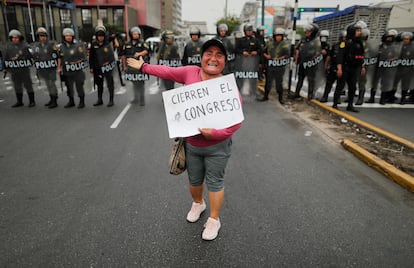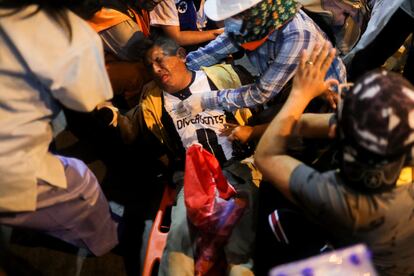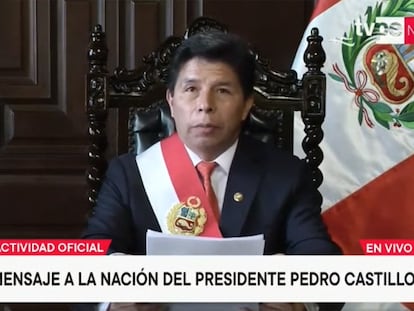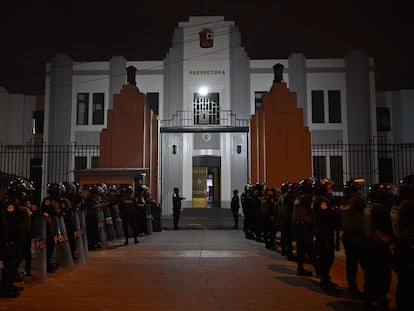Violence aggravates Peru’s political crisis
Two ministers have resigned following the deaths of 21 protestors, while the Peruvian Congress voted down a proposal hold early elections

Peru is a country accustomed to seeing presidents come and go – six in the past four years alone. However, with few exceptions, actually voting for a president has been held according to strictly scheduled dates. The last time that a presidential election was held early was in 2001, after former president Alberto Fujimori resigned at the start of his third term.
Since then, even when presidents have been impeached, the Congress has taken up the responsibility to designate a new head of state. But protestors in Peru want this to change.
The ongoing political crisis in Peru is becoming more tense with each passing day. In the south of Peru, at least 21 people have died in clashes between rioters and the security forces. Demonstrators are clamoring for the closure of Congress and new elections to be called. While several lawmakers have claimed that they, too, wish to resign, the parliamentarians have not taken a firm step to advance the polls.
The political suicide of Pedro Castillo – who attempted a failed self-coup and was subsequently impeached and arrested – has plunged the country into uncertainty. Even by Peruvian standards, today’s political labyrinth is hard to navigate. Since Dina Boluarte – Castillo’s former vice president – assumed office last week, becoming Peru’s first female president, she has been unable to curtail protests led by left-wing factions in the interior.
A state of emergency was extended on December 15, for a period of 30 days. But so far, it has not managed to calm the violence or stop attacks on critical infrastructure, including highways and airports. Tourists are stranded in many parts of the country, while fragile patients have been unable to reach the hospitals in Lima for treatment. The army has been deployed to support the National Police in an effort to restore order.
Boluarte and the Peruvian Congress seem to be aware that they will not be able to complete their current term in office, which is set to end in July 2026. Although the vast majority of Peruvians supported the impeachment and arrest of Castillo, the legislative branch has a disapproval rating of 86% – a dismal figure. Yet, the unpopular congresspeople are the ones who get to make the decision regarding early elections.
This past Friday, Congress voted on a proposal to hold general elections in December 2023. Only 49 legislators voted in favor, the majority of them from the right-wing Fuerza Popular or Popular Strength party, which is led by Keiko Fujimori, who was defeated by Castillo by less than half-a-percent of the vote in 2021. However, 87 votes are needed for an election date to be changed.
It is worth noting that none of the incumbent legislators or members of the executive branch would be allowed to run for immediate re-election, as consecutive terms are prohibited under Peruvian law.

Left-wing congresswoman Sigrid Bazán voted against the proposal, explaining that she wants new elections to be held at an even earlier date, in April 2023.
“We cannot stay [in office] for 16 more months, it’s unsustainable. Let’s all go now. As soon as possible,” she told the media.
Over the years, most Peruvians have disconnected from politics. The sense of malaise is evident across the country. The struggle between the executive branch and the legislative branch has become a daily issue, preventing any significant initiatives to address poverty, education, sanitation or healthcare.
As a curfew came into effect in 15 of Peru’s 24 regions, the recently-appointed prime minister posted pictures on social media of his meetings with organizations that have offered to help the government with “cleaning up beaches, rivers and streets.” However, his announcement was overshadowed by hundreds of people demonstrating in the Plaza de San Martín, in the center of Lima.
While the protests in Lima have been relatively minor, in the heavily Indigenous and impoverished south – the stronghold of Castillo, his party and his affiliated unions – riots have been fierce.
About a third of Peruvians live in Lima, a stronghold of the centrist and center-right parties. To bolster protests in the capital, left-wing organizations – affiliated with the leaders of Castillo’s Marxist “Free Peru” party – have been bussing in supporters from regions like Cajamarca, Junín and Ayacucho.
For many Peruvians who reside in the interior, Castillo’s narrow victory in the 2021 presidential elections was symbolic. As the third Indigenous president in the country’s history and a lifelong resident of rural Cajamarca, they saw him as someone who could combat the elite of Lima. His fall from grace – after only 16 months in office – has come as a shock. They want the 130 congresspeople to go home as soon as possible and give the country a chance to express itself at the polls. It is still unclear if they will listen.
Sign up for our weekly newsletter to get more English-language news coverage from EL PAÍS USA Edition
Tu suscripción se está usando en otro dispositivo
¿Quieres añadir otro usuario a tu suscripción?
Si continúas leyendo en este dispositivo, no se podrá leer en el otro.
FlechaTu suscripción se está usando en otro dispositivo y solo puedes acceder a EL PAÍS desde un dispositivo a la vez.
Si quieres compartir tu cuenta, cambia tu suscripción a la modalidad Premium, así podrás añadir otro usuario. Cada uno accederá con su propia cuenta de email, lo que os permitirá personalizar vuestra experiencia en EL PAÍS.
¿Tienes una suscripción de empresa? Accede aquí para contratar más cuentas.
En el caso de no saber quién está usando tu cuenta, te recomendamos cambiar tu contraseña aquí.
Si decides continuar compartiendo tu cuenta, este mensaje se mostrará en tu dispositivo y en el de la otra persona que está usando tu cuenta de forma indefinida, afectando a tu experiencia de lectura. Puedes consultar aquí los términos y condiciones de la suscripción digital.
More information
Archived In
Últimas noticias
From Andorra to Gibraltar, a black market for Ozempic exploits its success: ‘They’re the most sought-after products in the world’
Magnets in their heads: How some animals guide themselves using the Earth’s magnetic field
From Hungary’s Orbán to Chile’s Kast: How Trump helps turbo charge the far right
The brief rise and retreat of Generation Z in Mexico
Most viewed
- Why we lost the habit of sleeping in two segments and how that changed our sense of time
- Trump’s obsession with putting his name on everything is unprecedented in the United States
- Charles Dubouloz, mountaineering star, retires at 36 with a farewell tour inspired by Walter Bonatti
- Venezuela faces its most tense Christmas yet
- The Florida Keys tourist paradise is besieged by immigration agents: ‘We’ve never seen anything like this’











































